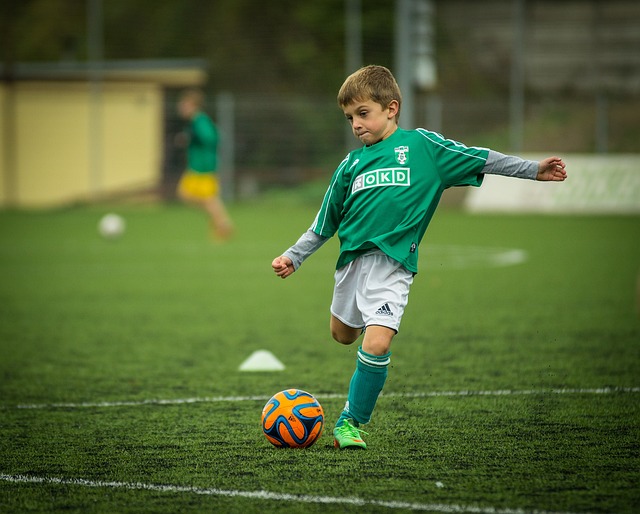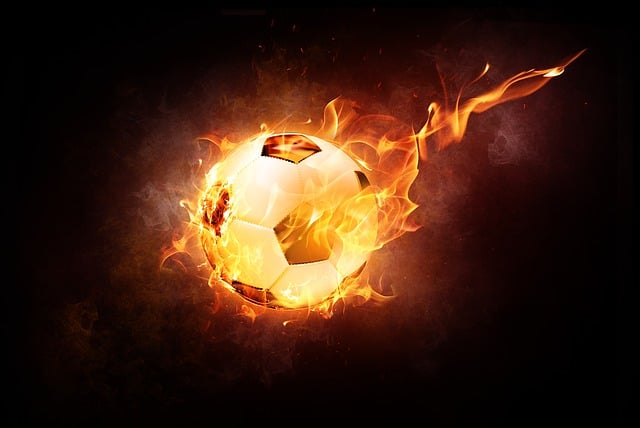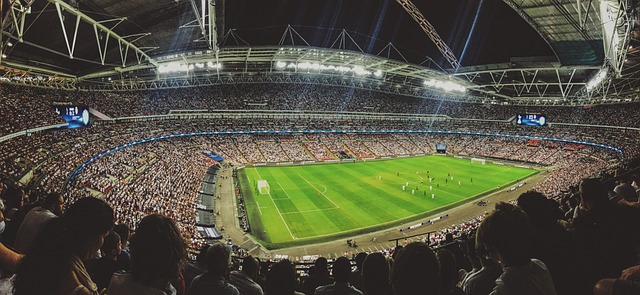Discover the perfect size of professional soccer balls used by the pros. Join us as we delve into the dimensions that bring the game to life.
Contents
- 1. Understanding the Importance of Professional Soccer Ball Size for Players’ Performance
- 2. International Standards: Official Regulations That Dictate Soccer Ball Size
- 3. Why Soccer Ball Size Varies Across Different Age Groups and Skill Levels
- 4. Unraveling the Secrets Behind Soccer Ball Size Selection at the Professional Level
- 5. Exploring the Science: How Ball Size Influences Gameplay and Technique
- 6. Finding the Perfect Fit: Factors to Consider When Choosing a Soccer Ball Size
- 7. Insider Recommendations: Preferred Soccer Ball Size by Position
- 8. Best Practices for Optimal Performance: Training Tips Specific to Soccer Ball Size
- 9. The Link Between Soccer Ball Size and Injury Prevention in Professional Players
- 10. Myth-Busting: Debunking Common Misconceptions Surrounding Soccer Ball Size in the Professional Game
1. Understanding the Importance of Professional Soccer Ball Size for Players’ Performance
When it comes to professional soccer, every aspect of the game is carefully considered and optimized for optimal performance. One such crucial factor that often goes unnoticed by spectators is the size of the soccer ball used in professional matches. The size of the soccer ball, as specified by FIFA, plays a key role in the overall dynamics of the game and greatly impacts players’ performance on the field.
Professional soccer balls are typically size 5, which is the standard size used in adult matches. This size is specifically designed to cater to the needs of professional players who possess exceptional skill and technique in their gameplay. The size 5 ball provides the perfect balance between weight, responsiveness, and control, enabling players to execute accurate passes, striking shots, and intricate dribbling maneuvers with ease.

2. International Standards: Official Regulations That Dictate Soccer Ball Size
International standards have been established to regulate the size of soccer balls to ensure consistency and fair play across professional leagues. These regulations are set by official governing bodies such as FIFA and determine the specific dimensions that a soccer ball must adhere to. Understanding these standards is crucial for both players and fans who want to delve deeper into the game.
The size of a professional soccer ball, as defined by international standards, is typically between 27 and 28 inches in circumference. This size is commonly known as size 5 and is used in most adult-level soccer competitions. However, it’s important to note that there are variations in ball size based on different age groups and levels of play. For instance, younger players may use a smaller ball such as size 4 (25-26 inches in circumference) or size 3 (23-24 inches in circumference). Additionally, women’s soccer typically employs a slightly smaller ball than the standard size 5, coming in at around 26-27 inches in circumference. By following these guidelines, professional soccer ensures that all participants play with a standardized ball size, promoting fairness and consistency on the field.
3. Why Soccer Ball Size Varies Across Different Age Groups and Skill Levels
When it comes to soccer, the size of the ball holds a crucial role in the overall gameplay. It not only affects the players’ ability to control and maneuver the ball but also ensures fair play across different age groups and skill levels. The variation in soccer ball sizes is primarily driven by two factors: safety and skill development.
Safety: Soccer balls intended for younger age groups are often smaller to promote a safer playing environment. Smaller balls reduce the risk of injuries, as young children might struggle to control a larger ball, leading to accidental mishaps. By using appropriately sized balls, children can develop their skills without excessive force or strain on their bodies.
Skill Development: As players get older and gain experience, larger balls are introduced to further challenge their skills. By using bigger balls, such as the standard size 5 ball used in professional matches, players are required to adapt their control, passing, and striking techniques. This progression helps elevate their game and prepares them for the demands of higher skill levels.

4. Unraveling the Secrets Behind Soccer Ball Size Selection at the Professional Level
Soccer is undoubtedly the most popular sport in the world, played and loved by millions. From local leagues to professional matches, the size of the soccer ball used can have a significant impact on the game. At the professional level, the selection of soccer ball size is a carefully considered decision that takes into account various factors.
Player Preference: Professional soccer players have honed their skills and techniques over years of practice, and they develop a unique style of play. The choice of ball size is often influenced by individual preference. Some players feel more comfortable with a smaller ball, as it allows for better control and accuracy during quick passes and dribbling. Others prefer a larger ball, as it offers more surface area for powerful shots.
Game Conditions: The selection of soccer ball size also depends on environmental factors, such as weather and playing surface. In wet or windy conditions, a smaller ball may be preferred as it is less susceptible to being affected by the elements. Similarly, on a muddy or waterlogged field, a smaller ball tends to be easier to handle. On the other hand, a larger ball is often used on artificial turf or hard pitches, as it provides better bounce and allows for a faster game pace.
FIFA Regulations: The International Federation of Association Football (FIFA) has set regulations governing the size and weight of soccer balls used in professional matches. According to FIFA guidelines, the standard ball size for adults is size 5, which has a circumference of 27 to 28 inches. However, they also allow for slight variations in size, ranging from size 1 to size 7, depending on the age group and level of play. This ensures consistency and fairness in the game, regardless of the size chosen.
Competitive Advantage: The choice of ball size can also be influenced by the desired competitive advantage. In certain situations, teams may opt for a smaller or larger ball to exploit weaknesses or capitalize on their strengths. For example, a team with agile and technical players might select a smaller ball to enhance their control and passing abilities, while a team known for powerful shots might prefer a larger ball to maximize their shooting potential.
The selection of soccer ball size at the professional level is a complex decision that encompasses player preference, game conditions, FIFA regulations, and strategic advantage. By carefully considering these factors, teams and players can optimize their performance and enhance the overall quality of the game.
5. Exploring the Science: How Ball Size Influences Gameplay and Technique
Soccer balls come in various sizes, but have you ever wondered why professional players use a specific size? The size of a soccer ball can greatly influence the gameplay and technique of players. Let’s delve into the science behind it!
1. **Affects Control and Precision**: The size of a soccer ball affects how players control and manipulate it. Smaller balls, such as size 3, are lighter and easier to control, giving players more precision when passing and dribbling. On the other hand, larger balls, like size 5, provide less control but more power due to their increased mass. This size is commonly used in professional matches as it requires players to have sound technique and strength.
2. **Impacts Soccer Tactics**: The size of the ball also influences soccer tactics. Smaller balls allow for quick, intricate passes and close ball control, making it suitable for teams that prioritize possession and short passing. Conversely, larger balls encourage longer passes and aerial play, promoting a more direct, physical style of play. Thus, the choice of ball size can shape the strategy and approach teams employ on the pitch.

6. Finding the Perfect Fit: Factors to Consider When Choosing a Soccer Ball Size
Choosing the right size soccer ball is crucial, not only for optimal performance but also for injury prevention. When it comes to professional soccer, the size of the ball used is standardized across the globe. The pros play with a size 5 soccer ball, which is the largest size available. This ball size is designed for players aged 13 and above, including adult players.
Factors to consider when choosing a soccer ball size include age, skill level, and position. For younger players, it is recommended to use smaller ball sizes to improve control and technique development. Players aged 9 to 12 typically use a size 4 ball, while players aged 6 to 8 use a size 3 ball. Additionally, goalkeepers may find it beneficial to use a slightly larger ball to improve their handling skills. Apart from age and skill level, position on the field also matters. Strikers and midfielders may prefer a size 5 ball for its long-range accuracy, while defenders may opt for a slightly smaller ball to enhance their control and accuracy in shorter passes.
Remember, finding the perfect fit is essential for your game. Choose a soccer ball size that suits your age, skill level, and position on the field. Experiment with different sizes to see which feels most comfortable and allows you to play your best game. With the right soccer ball size, you’ll be ready to take your skills to the next level on the field!
7. Insider Recommendations: Preferred Soccer Ball Size by Position
When it comes to professional soccer, choosing the right ball size is crucial to optimize performance and gameplay. It’s no secret that different positions require unique skill sets, and this extends to the choice of soccer ball size. Our insiders have gathered invaluable recommendations from seasoned professionals, shedding light on the preferred ball sizes by position.
Goalkeepers: In the high-pressure world of goalkeeping, precision and control are paramount. Hence, many goalkeepers opt for a size 5 soccer ball. Its larger dimensions provide better grip and handling, enabling keepers to make those game-winning saves confidently. The increased size also offers improved visibility for long-range shots, a crucial advantage when it comes to positioning and anticipating plays.
8. Best Practices for Optimal Performance: Training Tips Specific to Soccer Ball Size
When it comes to soccer ball size, it’s important to consider the optimal performance and training tips specific to each size. The size of the ball can significantly impact a player’s performance on the field. Here are some best practices to help you understand which soccer ball size is best for you:
Age and Level: One of the key factors to consider is the age and level of the players. Younger players, typically under the age of 8, generally play with a smaller size 3 ball. As players progress in age and skill level, they move on to a size 4 ball for ages 8-12, and finally a size 5 ball for ages 13 and above. It’s important to find the right balance between challenge and comfort, as using a ball that is too big or small can hinder a player’s development.
Footwork and Control: Using a soccer ball that is appropriate to your skill level can greatly improve footwork and control. Smaller balls require players to have precision and accuracy in their movements, helping to enhance technical skills such as dribbling and passing. On the other hand, larger balls can help players develop strength and power in shooting and heading. It’s crucial to practice with the appropriate size to maximize training efficiency and ultimately perform like a pro.
Remember, soccer ball size is not a one-size-fits-all approach. Choose the right size that suits your age, level, and training goals to optimize your performance on the field. So whether you’re a beginner looking to develop your skills or an experienced player striving to reach professional levels, selecting the right soccer ball size will play a pivotal role in your journey towards success.
9. The Link Between Soccer Ball Size and Injury Prevention in Professional Players
Soccer is undoubtedly one of the most beloved sports worldwide. With millions of professional players dedicating their lives to the game, it is essential to understand every aspect that can impact their performance and overall safety. One such factor is the size of the soccer ball that professionals play with. It may come as a surprise, but the size of the ball has a significant link to injury prevention in these highly skilled players.
When it comes to professional soccer, there are various regulations and guidelines set by international governing bodies, such as FIFA. These organizations have specified standards for the size of soccer balls used in different age groups and levels of play. For instance, a standard adult-sized soccer ball weighs between 410 and 450 grams with a circumference of 68 to 70 centimeters. However, recent studies suggest that modifying the ball size within these established limits can provide additional benefits in terms of player safety and injury prevention.
- Smaller balls can reduce the risk of knee and ankle injuries: The use of a slightly smaller ball in professional games encourages players to use a lower body stance, increasing stability and promoting good form. This results in reduced stress on the knees and ankles, minimizing the potential for sprains, strains, or even more serious injuries.
- Improved ball control with larger balls reduces collision risk: On the other hand, some studies have shown that using a slightly larger ball can enhance players’ ability to control the ball during matches. Improved control leads to fewer collisions and inadvertent clashes between players, ultimately decreasing the risk of injuries like concussions or fractures.
While there is ongoing research to determine the optimal soccer ball size in relation to injury prevention, the findings highlight the importance of considering this factor in professional soccer games. These studies not only contribute to player safety but also provide valuable insights for coaches, referees, and manufacturers in designing better equipment to enhance the overall quality of the game.
10. Myth-Busting: Debunking Common Misconceptions Surrounding Soccer Ball Size in the Professional Game
In the professional game of soccer, there are often misconceptions surrounding the size of the soccer ball that is used by the pros. Let’s dive into some common myths and debunk them once and for all:
Myth 1: The size of the soccer ball used in professional games is the same as the one used in recreational play.
Contrary to popular belief, professional soccer matches utilize a slightly different ball size than what is typically used for recreational play. While recreational games commonly use a size 5 ball, professional players play with a size 5 ball as well, but with specific regulations. The circumferences and weights of professional balls are closely regulated to ensure consistent gameplay and fairness at the highest level.
Myth 2: Soccer ball size varies based on player position.
No matter what position a player holds in the professional game, all players utilize the same ball size. Whether you’re a striker, midfielder, defender, or goalkeeper, the size 5 ball remains constant. The misconception of position-specific ball sizes might stem from the fact that goalkeepers sometimes opt for gloves to enhance their grip on the ball, giving an illusion of a larger ball. However, the ball itself remains the same size throughout the entire match.
In conclusion, knowing the professional soccer ball size is key for serious players. The Standard Size 5 ball used by the pros offers optimal performance and accuracy. So, hop on the field with the right gear and up your game! ⚽???? #SoccerBallSize #ProfessionalPlayers



